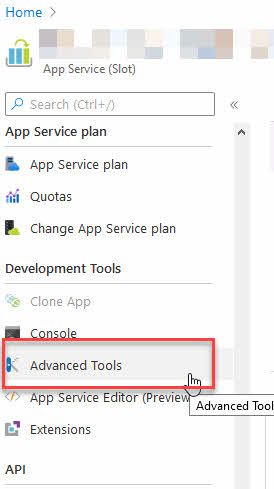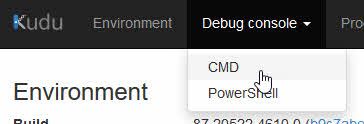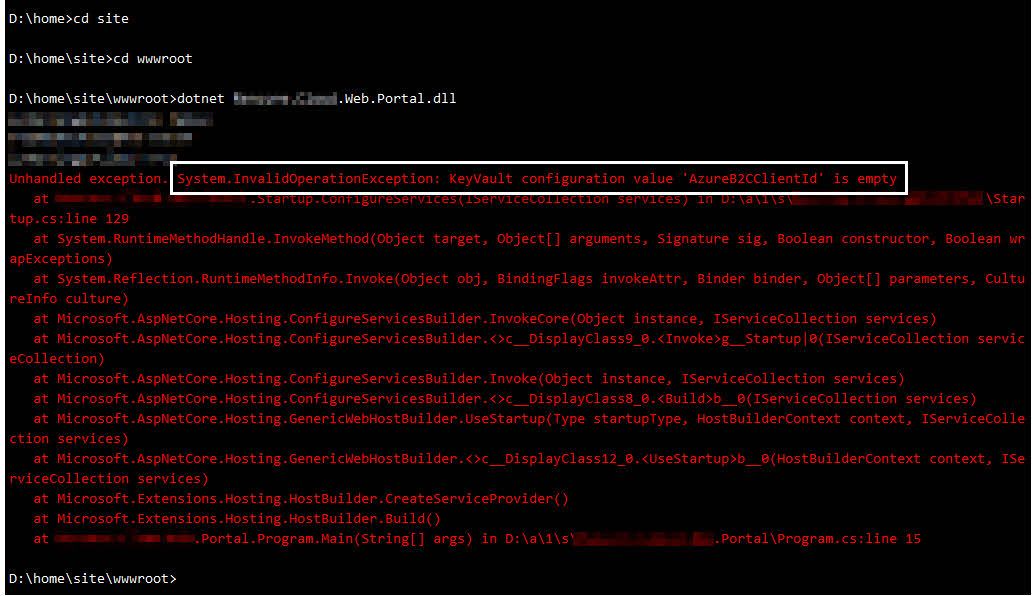Using Kudu
First, let’s launch Kudu. You can do this in a variety of ways. Here are a few:
Launch Kudu manually from the address bar
If your website is https://magicalunicorns.azurewebsites.net, the Kudu URL is https://magicalunicorns.scm.azurewebsites.net. Notice the appended “scm.” here. You’ll need to be signed in with an account with access to the App Service resource with the appropriate permissions.
Launch Kudu from the Azure Portal
In the Azure Portal, visit your Azure App Service and find the option for “Advanced Tools“:

Voila, you’re where you need to be.
Use the Kudu debug console to troubleshoot your application quickly
Since the application error indicates that it crashes already at the startup, it’s relatively straight forward to understand where we need to start. I want to “launch the web app” to see what happens.
Go to “Debug console” – “CMD“:

Navigate to the directory where your web site is hosted, which is usually in “\home\site\wwwroot“.
From here, simply launch the app using “dotnet <your app dll>“. This launches the application within Azure App Service, including all the configuration and things that are tied to it, and should render a better error message for you immediately:

Comments